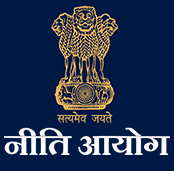Insurance Industry in India: Lessons from COVID-19
Joseph Schumpeter, an Austrian economist, considered creative destruction, the incessant innovation mechanism by which new production units replace outdated ones, essential for long-term growth. The health-cum-economic virus COVID-19 has started a similar process of creative destruction for India’s insurance industry.
The insurance industry in India mainly consists of three stakeholders: life and non-life(general) insurance companies, customers, and the regulator IRDAI, apart from the sole national reinsurer General Insurance Company of India. The life insurance sector captures 75% of the market share and accounts for 50% of the insurance companies in India.
Until the outbreak of COVID-19, the insurance industry experienced double-digit growth, with the life insurance sector growing at 11-12% annually. Business premiums were higher than the previous year. However, COVID-19 has disrupted the insurance sector in two ways: It created new avenues for higher future growth and reversed many earlier gains.
COVID-19 affected businesses of many insurance companies. According to IRDAI, the number of new issued policies declined, as the purchasing power of customers fell; the assets under management of companies reduced since there was a dip in the stock market and higher redemption of policies by customers to meet their cash needs.
At the same time, COVID-19 also generated new growth opportunities. The economic burden of the virus, in terms of hospitalization charges, made people realize the importance of insurance. According to PWC, insurance is now considered a necessary risk mitigation tool, not an investment product for the wealthy. This has nudged people to demand insurance. COVID-19 has also normalized work from home, creating a market for new types of insurance. E.g.: cybersecurity insurance. Companies will have to develop new products to satisfy this new demand. Social distancing and online transactions are a new normal, forcing insurance companies to digitize the distribution of insurance products, premium underwriting, and filing claims. The pandemic has also changed the claims pattern: The life insurance claims increased 5-10 times post the 2nd wave, while general insurance like motor insurance etc., have witnessed a dip. The impact of these changes is already visible as the number of new policies issued is almost equivalent to pre-Covid levels. According to IRDAI, business premiums have witnessed a 16% year-on-year growth, and the life insurance industry grew 21 percent higher in February 2021 as compared to February 2020.
Apart from these new opportunities, IRDAI had issued guidelines to support the industry by mandating the introduction of standard insurance products. Two standard insurance products were launched: Corona Kavach, a mandatory indemnity type product for families and individuals covering claims as per actual hospital bills, and Corona Rakshak, an optional benefit type product only for individuals where the entire insured sum is paid.
However, only 15% of COVID deaths were insured in FY21. One of the main reasons for the low uptake was the huge variation in premium despite the products being standardised. Secondly, due to COVID restrictions and social distancing, most transactions had become digital, but very few insurers sold insurance products online. Further, India has a substantial digital divide, which prevented many from buying insurance even if they were aware of it. Thirdly, for the products sold online, there were restrictions for those with co-morbidities since excessive claims could affect the financial viability of insurers. This blocked many buyers. Lastly, COVID-19 took the world by surprise. The response had to be immediate, and most companies took time to adapt to the new normal.
Given this context, can the insurance industry exploit the changing market situation to its advantage? The answer is complicated as many existing challenges plague the industry. Firstly, inadequate coverage: PWC estimates that only 18% of the urban population and around 14% of the rural population is insured. Life insurance penetration (Premium percentage as the percentage of GDP) is 2.82% in FY2020, below the global average of 3.35%, while life insurance density (ratio of premium to population) is 58 USD, much below the global average of 379 USD.
Secondly, moral hazard is highly prevalent in the industry. There is a surge in the proportion of non-standard claims, as it varies according to the severity of the disease. COVID is an evolving disease making it difficult to verify whether the death was due to the virus or co-morbidity. This has reduced the accuracy of estimates claims, deepening the information asymmetry in the industry.
Thirdly, IRDAI statutorily has the dual functions of regulation and supervision. Despite the tremendous work done by IRDAI, it is short-staffed to handle the size of potential consumer grievances (given the wide geographic reach, the volume of insurance holders, and the complexity of this specialized sector.) Additionally, supervision and regulation are distinct functions: while regulation is rule-making to facilitate growth, supervision involves ensuring compliance of the same rules and thus protecting consumers from frauds, etc. Thus for efficiency, IRDAI should be given the sole function of regulation.
Lastly, the deadweight loss of PSUs affects the industry's viability: Public companies dominate the insurance sector, but their market share is declining: In the life insurance segment, the market share of private companies has grown from 2% FY03 to 33% in FY19. Further, PSUs account for 82% of insurance industry losses. In light of this, the recent move of the Government of India to hike the FDI limit to 74% from 49% is welcome. The presence of private companies is necessary for unique products and targeted marketing to increase insurance penetration and density.
Given these challenges, many steps can be taken which will improve the functioning of the insurance industry. Firstly, insurance literacy needs to spread across age groups. India shouldn’t depend on pandemics to increase insurance demand. Insurance literacy needs to be a part of our education system. With NEP on the cards, insurance literacy should be a part of the curriculum. This will nudge consumers to buy insurance leading to higher coverage, bridging information asymmetry, and reducing the socio-economic cost of COVID-like-pandemics.
More often than not, Indians react strongly to financial incentives. Hence, reducing Goods and Services Tax (GST) for a term and health insurance, offering income tax benefits on paying premiums, etc. will also improve insurance uptake. Gen Z can be attracted by offering discounts on fitness products, and wearables to customers with insurance cover.
Thirdly, since COVID has forced digitization, it is time companies embrace AI fully. IRDAI played a key role by establishing the Sandbox Regulations in 2019 to promote innovations in fin-tech and insure-tech products like online automotive claims, health profile-based pricing, as well as AI-based claims estimation, and chatbots on wellness programs for customer engagement. This will make room for customer-centric products, efficient policy pricing, and bridge the trust deficit between insurers and customers.
Additionally, it is time IRDAI de-links insurance and investment to harness the optimum benefits of insurance as a product. Products like ULIP are popular as they are seen as protection-cum-investment products. However, such products fail to function efficiently and enhance the already existing asymmetry in industry, leading to market failure.
Lastly, in the long run, the National Health Stack, conceptualized by NITI Aayog and part of the National Digital Health Mission, should be utilized to identify the uninsured vulnerable population. A digital record of medical history will enable targeted insurance and allow companies to spread operations to tier 2,3,4 cities.
Health is wealth is no longer an adage, but our new reality. This needs to be accepted and by implementing these steps, the insurance industry would be ready to deal with future pandemics, improve customer satisfaction and ensure efficiency of firms assuring that no pandemic in the future affects lives as Coronavirus did.
Author is former Intern, Insurance, Banking, and Finance Division at NITI Aayog.
Views expressed are personal.
 National Portal Of India
National Portal Of India 







